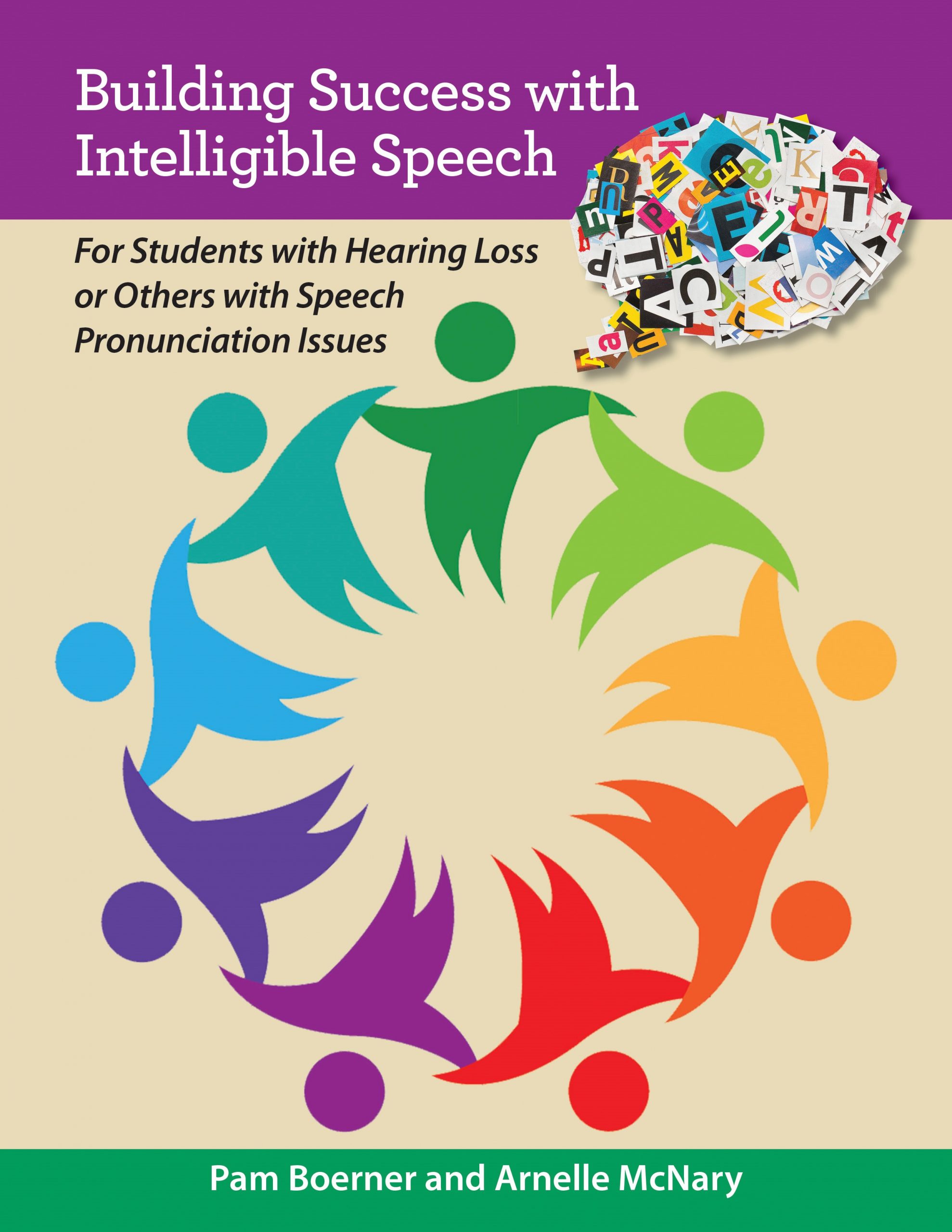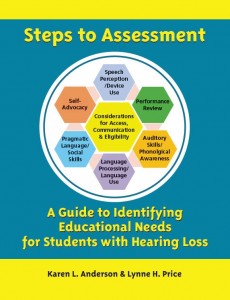Related Products
For Professionals
- Amplification
- Assessment of Student Skills, Challenges, Needs
- Early Childhood: Infants, Toddlers, Preschool
- Hearing Loss – Identification, Impact and Next Steps
- IDEA Law Summary Information
- Language and Speech Development Issues
- Legal Issues in Serving Children with Hearing Loss
- Listening (Auditory Skills) Development
- Planning to Meet Student Needs
- Self-Advocacy Skills for Students with Hearing Loss
- Self-Concept: How the Child with Hearing Loss Sees Himself
- Social Skills
- Speech Perception & Learning
Related Teacher Tools Takeout Items
The Necessity of Classroom Observation

Classroom observation is a critical part of assessment and performance monitoring. It provides the opportunity to collect data on how the student with hearing loss is functioning in the classroom in comparison to typical peers. Specifically, we need to observe behavior using what we know about how the hearing loss impacts speech perception, listening, learning, language, participation, behavior and overall social interaction.
Why do students with hearing loss specifically need to be observed?
Eligibility for specialized instruction and supports is based on information from academic, developmental and functional sources. IDEA does not specify that students must show academic needs (as in having poor grades) – it specifies showing adverse impact on educational performance, which is broader than just academics.
Who is the professional that needs to observe?
Teachers of the deaf/hard of hearing, educational audiologists, and speech language pathologists with a specialty in DHH all bring the following ‘lenses’ to their observations. In some places this input by the student’s classroom interpreter or transliterator is also sought. These “lenses” of observation are different from others on the assessment/IEP team.
 Communication Lens
Communication Lens
- How much instruction does the student understand?
- What is the student’s level of classroom interaction?
Participation and Social Language Lens
- What strategies or compensatory skills does the student utilize?
- What does the student do when there are learning breakdowns?
- How does the student understand and utilize social language in the integrated setting?
- Are the student’s use and understanding of social language developing appropriately?
Curriculum Lens:
- What strengths and gaps in access were observed when the teacher delivered the instruction?
- What strengths and gaps in access were observed when the peers contributed to the instructional delivery?
- How did the student access the general education curriculum when technology was utilized?
- Did the student demonstrate appropriate progress in the general education curriculum?
This focus of student assessment is different from other school staff that do not have DHH expertise.
What needs to be observed?
| Download the Observational Record of Behavior as an example of specific behaviors to focus on during observation and how they can be rated while you observe. |
The information under each of the “lenses” provide a good start to what the observer needs to have in mind when beginning the classroom observation. One example of a form to use has been provided (see box). The Access to Curriculum Assessment Inventory1 is a highly recommended process to follow to obtain observation information.
It is critical to not only note behaviors, but to collect specific data. The following are examples:
FREQUENCY – number of times, or how often a student behavior occurs
- “Tyler turned to watch his peers offering oral responses 2/9 times or 22% of the time.”
DURATION – total amount of time a student is engaged in a specific behavior
- “During Marianne’s 45 -minute civics class on October 12, she attended to the interpreter 44% of the time. The longest interval of attending was 5 minutes.”
LATENCY – elapsed time between an event and the expected behavioral response
- “In the morning it takes William 7 minutes to follow instruction after the teacher gives a direction. In the afternoon it takes William 4 minutes to follow instruction after the teacher gives a direction.”
How can observation data be reported?
In chapter one of Building Skills for Success in the Fast-Paced Classroom1 steps were provided describing how to conduct a systematic classroom observation through the DHH lens. An extensive report of findings from a real student classroom observation using this systematic process can be downloaded here. The names have been changed to protect identities. Excerpts from the report:
- Of the 17 questions or items reviewed, Sam was able to answer five correctly (29%). Much of this information was review, not new. Sam was surprised when told the British were from England, not France, they lost the war and that the Continental Army was made up the colonists/Americans and they/we won the war in America, not in France.
- The pace, level of complexity in relation to new concepts and vocabulary and language loaded curriculum in all areas at his current grade level highlight Sam’s difficulty to access and internalize new information at the same rate as his grade level peers. … Without a concerted effort and plan for intervention, the gap that is seen at the fifth-grade level will only continue to increase.
Identifiable adverse educational effects caused by the hearing loss
Students with hearing loss have access issues, as hearing technology does not ‘restore’ normal hearing ability, especially when listening at a distance, in noise, and to softly spoken or quickly spoken speech. Functional information by means of classroom observation, teacher checklists, and student checklists, will often reveal that students with hearing loss:
1) Hesitate in starting work after instruction
2) Participate less in the classroom (less often, less appropriately)
3) Have challenges comprehending verbal instruction, class discussions, small group work, and partner projects as compared to peers.
4) May interact less and/or more immaturely with peers
In grades preschool through fourth grade this translates into the need to develop awareness of
(a) when information is being missed (he doesn’t know what he didn’t hear because he didn’t hear it – but he is continually held accountable for knowing this information anyway),
(b) different ways to respond when information is missed (communication repair),
(c) appropriate ways and when to self-advocate, and then
(d) in the tween/teen years, how to apply problem-solving to challenging situations for self-determination.
- 1. Access to Curriculum Assessment Inventory can be found in Building Skills for Success in the Fast-Paced Classroom, page 27-58 or purchased as part of the Teacher Inservice Combo from Supporting Success.
- 2. Anderson, K. & Arnoldi, K. (2011). Building Skills for Success in the Fast-Paced Classroom. Supporting Success for Children with Hearing Loss Publications. Pages 14-19.


